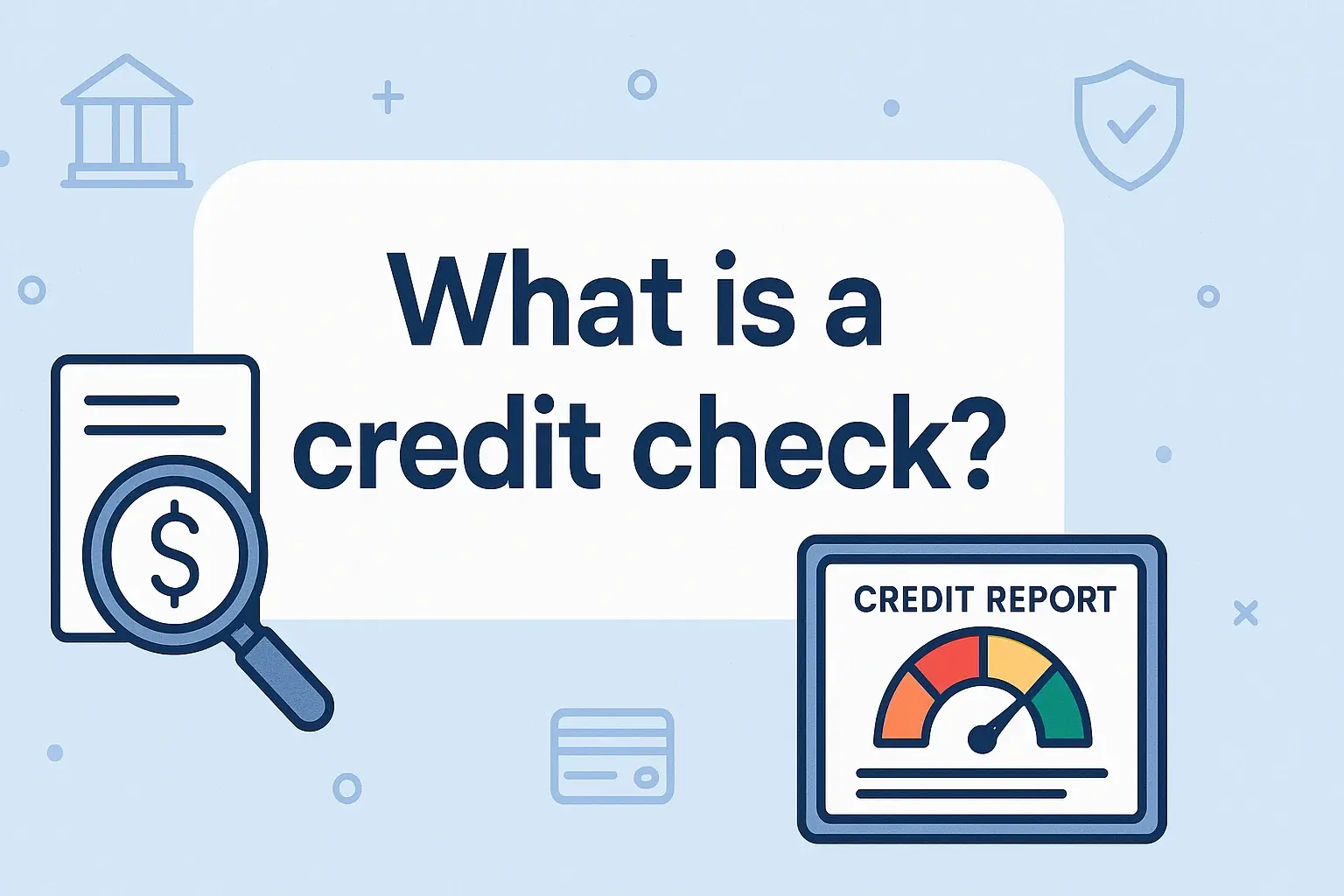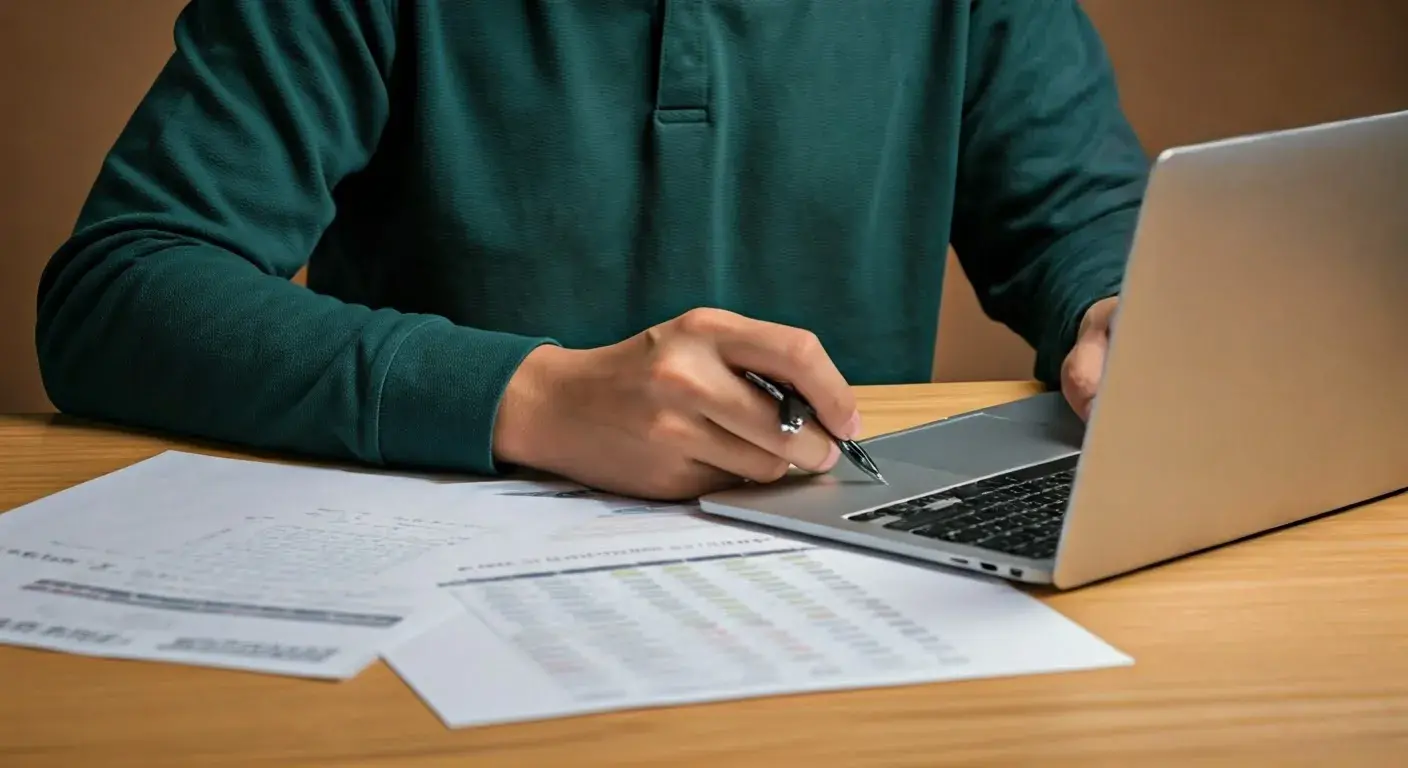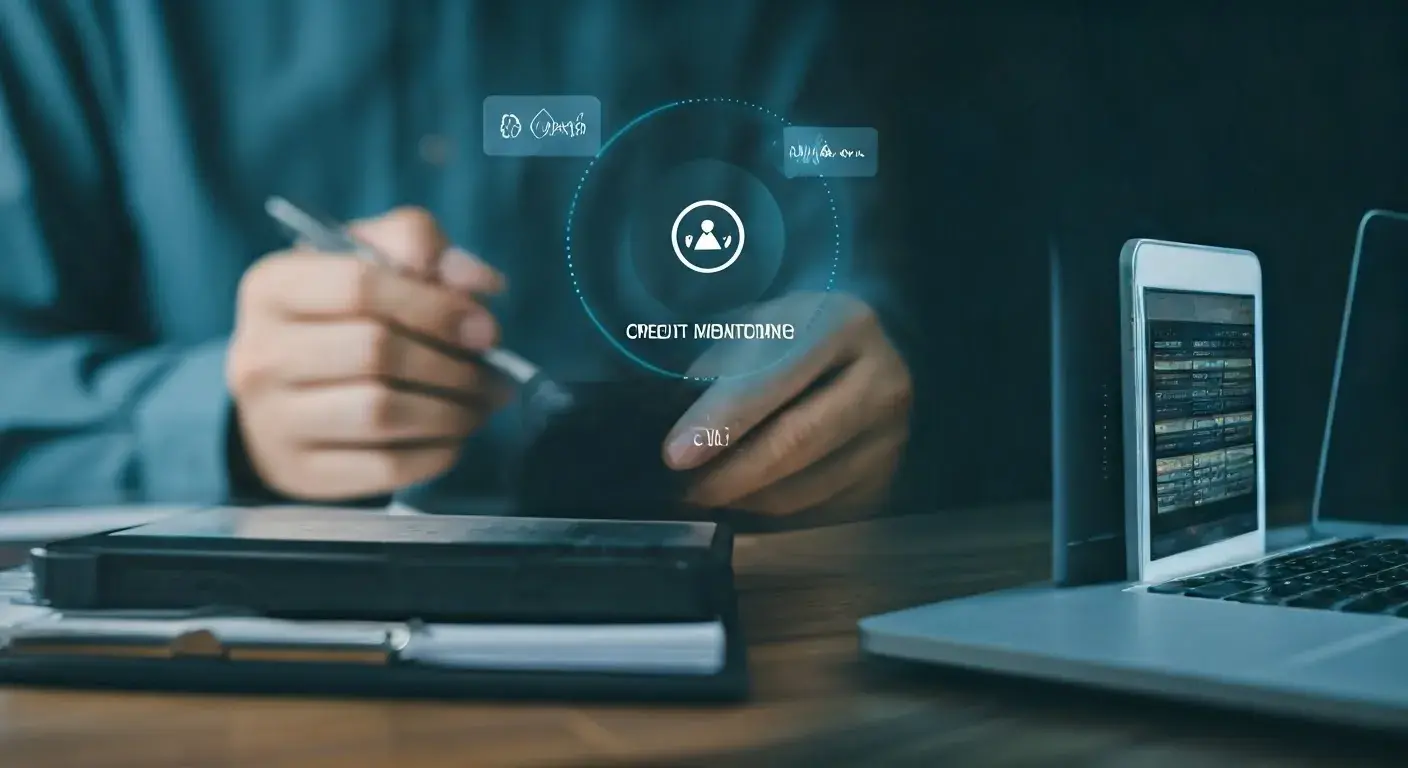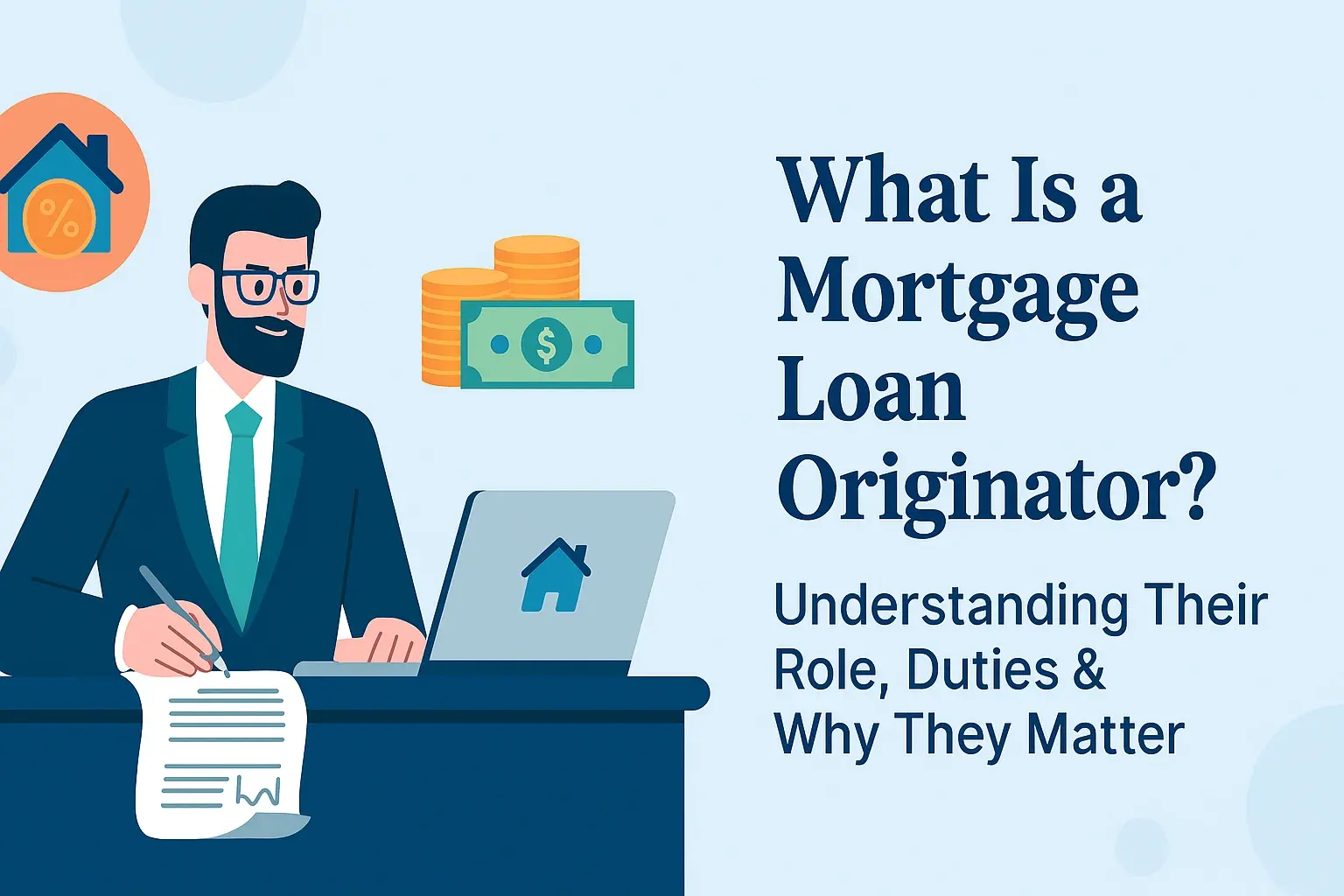-
Posted on: 31 Dec 2024
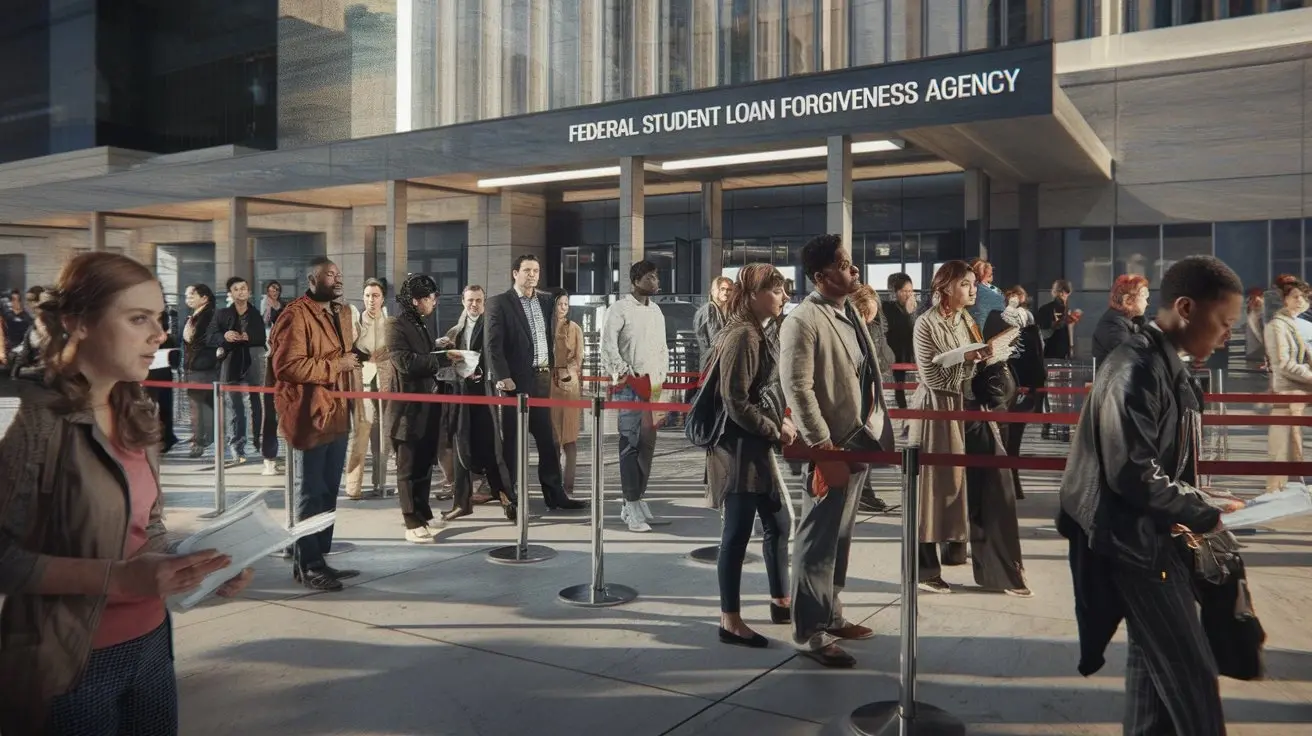
-
Navigating the landscape of student loan forgiveness in 2025 can feel complex, but understanding the current programs and eligibility criteria is the first step. This guide breaks down who is likely to benefit from student loan forgiveness initiatives in the upcoming year, offering clarity and actionable insights for borrowers.
Understanding Student Loan Forgiveness in 2025
Student loan forgiveness, a topic of significant interest and frequent policy shifts, continues to evolve. For 2025, the landscape is shaped by ongoing implementations of past reforms, potential new legislative actions, and administrative adjustments to existing programs. The core principle remains the same: to provide relief to borrowers who have struggled with their federal student loan debt, often due to economic hardship, public service, or specific repayment structures. However, the question of "who cuts the line" is paramount, as resources and eligibility criteria often mean not all borrowers can access forgiveness simultaneously or easily. This year, emphasis is placed on streamlining processes, correcting past administrative errors, and expanding access to those who have been historically underserved or disproportionately burdened by student debt.
The Shifting Landscape of Federal Student Loans
Federal student loans, while a vital tool for accessing higher education, have also become a significant source of financial stress for millions. The total outstanding federal student loan debt in the U.S. has ballooned over the past two decades, prompting various administrations to explore and implement forgiveness programs. In 2025, we see a continuation of efforts to address this debt crisis. This includes not only direct forgiveness but also reforms to repayment plans and interest accrual, all of which can indirectly lead to eventual forgiveness or make repayment more manageable.
Key Policy Drivers for 2025
Several key policy drivers are influencing student loan forgiveness in 2025. The Biden-Harris administration's focus on targeted relief, particularly for borrowers who have been in repayment for extended periods or who work in public service, remains a central theme. Additionally, the ongoing effects of the COVID-19 pandemic, including the pause on federal student loan payments and interest, have had a ripple effect. While the payment pause has ended, its impact on borrowers' ability to make payments and its potential for future forgiveness considerations are still being assessed. Furthermore, the Department of Education continues to review and refine Income-Driven Repayment (IDR) plans, aiming to simplify them and ensure that borrowers receive the promised forgiveness after a set period of qualifying payments.
What "Forgiveness" Truly Means
It's crucial to understand that "forgiveness" in the context of federal student loans typically means the remaining balance on your loan is discharged after you meet certain requirements. This discharge is not taxable income at the federal level, which is a significant benefit. However, the path to forgiveness can be long and intricate, requiring diligent tracking of payments, employment, and adherence to specific program rules. For 2025, the focus is on making these paths clearer and more accessible, especially for those who have been diligent in their repayment efforts or who have dedicated their careers to public service.
Key Forgiveness Programs for 2025
Several established and evolving programs are central to student loan forgiveness efforts in 2025. Understanding the nuances of each is critical for borrowers seeking relief. The most prominent pathways include Public Service Loan Forgiveness (PSLF) and various Income-Driven Repayment (IDR) plans. Beyond these, other targeted initiatives may offer relief to specific groups of borrowers.
Public Service Loan Forgiveness (PSLF)
PSLF remains a cornerstone of federal student loan forgiveness. It offers full forgiveness of the remaining Direct Loan balance to borrowers who have made 120 qualifying monthly payments while working full-time for a qualifying employer. In 2025, the program continues to be a primary avenue for relief, especially with ongoing efforts to fix past administrative issues that prevented many eligible borrowers from receiving forgiveness.
Who Qualifies for PSLF?
- Borrower Type: Must have federal Direct Loans. Loans from the Federal Family Education Loan (FFEL) Program or Perkins Loans generally do not qualify unless consolidated into a Direct Consolidation Loan.
- Employment: Must be employed full-time by a U.S. federal, state, local, or tribal government or a not-for-profit organization that is tax-exempt under Section 501(c)(3) of the Internal Revenue Code. Certain other non-profits also qualify.
- Payment Type: Payments must be made under a qualifying repayment plan (typically an IDR plan or the 10-year Standard Repayment Plan, though IDR plans are most common for forgiveness).
- Payment Count: A total of 120 qualifying monthly payments must be made. These payments do not need to be consecutive.
Income-Driven Repayment (IDR) Plans
IDR plans are designed to make monthly payments more affordable based on a borrower's income and family size. After a specified period of repayment (typically 20 or 25 years, depending on the plan and loan type), any remaining loan balance is forgiven. In 2025, significant attention is being paid to the IDR Account Adjustment, which aims to correct historical inaccuracies in payment counting, bringing more borrowers closer to forgiveness.
Types of IDR Plans
- Revised Pay As You Earn (REPAYE) Plan: Payments are generally 10% of discretionary income.
- Pay As You Earn (PAYE) Plan: Payments are generally 10% of discretionary income, capped at the 10-year Standard Repayment Plan amount.
- Income-Based Repayment (IBR) Plan: Payments are generally 10% or 15% of discretionary income, depending on when you received your first loan.
- Income-Contingent Repayment (ICR) Plan: Payments are the lesser of 20% of discretionary income or the amount you'd pay on a repayment plan with a fixed payment over 12 years, adjusted to income.
Teacher Loan Forgiveness Program
This program offers forgiveness to full-time teachers who have worked in low-income schools or educational agencies for at least five consecutive academic years. The amount of forgiveness can be up to $17,500 for certain math and science teachers and special education teachers, and up to $5,000 for other eligible teachers.
Total and Permanent Disability (TPD) Discharge
Borrowers who are totally and permanently disabled may qualify for a TPD discharge of their federal student loans. This discharge is based on medical documentation proving an inability to engage in substantial gainful activity. The process has been streamlined in recent years, making it easier for eligible individuals to apply and receive relief.
Public Service Loan Forgiveness (PSLF) Updates
The Public Service Loan Forgiveness (PSLF) program has undergone significant reforms, particularly in recent years, aimed at correcting past administrative failures and making it more accessible. For 2025, these improvements continue to benefit borrowers who have dedicated their careers to public service. The Department of Education has been working diligently to ensure that qualifying payments are accurately counted and that eligible borrowers receive the forgiveness they are entitled to.
The PSLF Waiver and Its Lasting Impact
While the limited PSLF Waiver officially ended on October 31, 2022, its impact is still being felt in 2025. This waiver allowed for a temporary period where borrowers could get credit for past payments that previously wouldn't have qualified under PSLF rules. This included payments made under non-IDR plans and payments made before consolidation. Many borrowers who took advantage of this waiver are now seeing their payment counts updated, bringing them closer to or qualifying them for forgiveness. The Department of Education continues to process these adjustments, meaning that even if you didn't apply during the waiver period, your eligibility might have been retroactively improved.
Ongoing Administrative Improvements
Beyond the waiver, the Department of Education has implemented ongoing administrative changes to PSLF. These include:
- Improved Payment Tracking: Enhancements to the system for tracking qualifying payments are in place, aiming for greater accuracy and transparency.
- Employer Verification: Streamlined processes for verifying employment with qualifying public service employers are being utilized.
- Borrower Support: Increased resources and clearer guidance are available to help borrowers understand their eligibility and navigate the application process.
The PSLF Help Tool
The PSLF Help Tool remains a critical resource for borrowers. It allows individuals to:
- Determine if their employer qualifies for PSLF.
- Estimate how many qualifying payments they have made.
- Generate the PSLF Employment Certification Form (ECF) to submit to the Department of Education.
Regularly using this tool and submitting ECFs is crucial for borrowers to ensure their progress towards PSLF is accurately recorded. For 2025, continuing to certify your employment annually or whenever you change employers is a best practice.
Who is Prioritized for PSLF in 2025?
In 2025, the primary focus for PSLF remains on borrowers who have diligently worked in public service and made qualifying payments. Those who have already submitted ECFs and are awaiting processing, or those who have reached 120 qualifying payments and have applied, are naturally at the front of the line for forgiveness. Additionally, borrowers who benefited from the limited PSLF waiver and are now seeing their payment counts adjusted are also being prioritized as these adjustments are processed. The ongoing administrative improvements are designed to catch up on the backlog and ensure that all eligible borrowers receive their rightful forgiveness.
Income-Driven Repayment (IDR) Plans and Forgiveness
Income-Driven Repayment (IDR) plans are a critical pathway to student loan forgiveness for millions of borrowers. These plans tie monthly payments to a borrower's income and family size, making repayment more manageable. After a specified period of qualifying payments, any remaining balance is forgiven. In 2025, the IDR program is undergoing significant enhancements, particularly through the IDR Account Adjustment, which aims to correct historical inaccuracies in payment counting and bring more borrowers closer to forgiveness.
The IDR Account Adjustment: A Game Changer
The IDR Account Adjustment, initiated by the Department of Education, is arguably the most significant development for IDR forgiveness in recent years. This adjustment aims to provide borrowers with credit for past periods of repayment that were previously not counted towards the 20- or 25-year forgiveness timeline. This includes:
- Periods of repayment on any federal loan program (Direct, FFEL, Perkins, etc.), regardless of the repayment plan.
- Months where payments were late or in forbearance (under certain conditions).
- Months of deferment (except for in-school deferments) prior to 2013.
For 2025, the Department of Education is continuing to implement this adjustment, automatically updating borrower accounts. Borrowers who reach 20 or 25 years of qualifying payments due to this adjustment will have their remaining balances forgiven. This is a monumental step for many who have been paying for decades but were not on track for forgiveness under the old rules.
How the IDR Adjustment Works
The adjustment is applied automatically to federal Direct Loan borrowers. For FFEL and Perkins loans, borrowers must consolidate these loans into a Direct Consolidation Loan by a certain date (which has passed for many benefits, but consolidation remains key for future IDR eligibility) to receive the full benefit of the IDR Account Adjustment. The Department of Education is reviewing all federal loan accounts and will update payment counts accordingly. Borrowers will be notified when their payment counts are adjusted.
Who Benefits Most from the IDR Adjustment in 2025?
The IDR Account Adjustment is particularly beneficial for:
- Long-term Borrowers: Those who have been in repayment for 20 or 25 years or more, regardless of their payment amount or plan.
- Borrowers Who Switched Plans: Individuals who have switched repayment plans over the years, as the adjustment counts payments made under various plans.
- Borrowers Who Experienced Delays: Those who may have had periods of forbearance or deferment that are now being counted.
- Borrowers with Consolidated Loans: Borrowers who consolidated older FFEL or Perkins loans into Direct Consolidation Loans may see their payment counts reset to the earliest repayment period of the consolidated loans.
For 2025, borrowers who are nearing the 20- or 25-year mark should actively monitor their loan servicer accounts and the Department of Education's updates to see how the adjustment has impacted their progress towards forgiveness.
Navigating IDR Plans for Future Forgiveness
For borrowers who are not yet at the 20- or 25-year mark, enrolling in an IDR plan remains a strategic move for future forgiveness. The REPAYE plan, which is being replaced by the SAVE plan, offered a 10% payment calculation. The new SAVE (Saving on a Valuable Education) plan, which is now in effect, offers even more favorable terms, including lower monthly payments for many borrowers and a shorter forgiveness timeline for those with smaller original principal balances.
Key Features of the SAVE Plan:
- Lower Monthly Payments: For undergraduate loans, payments are calculated at 5% of discretionary income. For graduate loans, it's 10%, and for borrowers with both, it's a weighted average.
- Interest Subsidy: Unpaid interest is not added to the loan balance if you make your full monthly payment.
- Shorter Forgiveness Timeline for Smaller Balances: Borrowers with original principal balances of $12,000 or less can receive forgiveness after as little as 10 years of payments, with an additional year for every $1,000 borrowed above $12,000, up to 20 or 25 years.
For 2025, enrolling in the SAVE plan is highly recommended for borrowers seeking to manage their payments and work towards eventual forgiveness, especially if they have lower balances or are on a long repayment track.
Other Forgiveness Avenues in 2025
While PSLF and IDR plans are the most prominent pathways to student loan forgiveness, several other avenues may be available to specific groups of borrowers in 2025. These programs often target particular professions, circumstances, or loan types, offering targeted relief that can significantly impact a borrower's financial situation.
Borrower Defense to Repayment
This program provides relief to federal student loan borrowers whose schools misled them or engaged in misconduct. If a borrower attended a school that closed, defrauded its students, or otherwise violated state or federal laws, they may be eligible for a discharge of their federal student loans. In 2025, the Department of Education continues to process claims under borrower defense, and there have been significant group discharges for students who attended certain institutions. Borrowers who believe they were defrauded should research their eligibility and submit a claim.
Closed School Discharge
Similar to borrower defense, a closed school discharge is available if your school closed while you were enrolled, or shortly after you withdrew. You may be eligible for a discharge of the federal student loans you used to attend that school. For 2025, the process remains active, and borrowers should check their eligibility with their loan servicer or the Department of Education.
Total and Permanent Disability (TPD) Discharge
As mentioned earlier, this discharge is for borrowers who are unable to engage in substantial gainful activity due to a physical or mental disability. The application process typically requires documentation from a physician. In 2025, the Department of Education continues to streamline this process, including through data matching with the Social Security Administration and the Department of Veterans Affairs, to identify potentially eligible borrowers automatically.
State-Specific Programs
Beyond federal programs, many states offer their own loan forgiveness or repayment assistance programs. These often target specific professions such as healthcare providers, teachers, or public defenders working in underserved areas within the state. Borrowers should research programs offered by their state's higher education authority or relevant professional licensing boards. For 2025, these state-level initiatives can provide a valuable supplement to federal forgiveness options.
Perkins Loan Cancellation
While most Perkins Loans have been managed by schools, the federal government has been buying them back. For borrowers with Perkins Loans, cancellation provisions may still exist, particularly for those in certain public service professions (similar to PSLF but for Perkins Loans). If you have Perkins Loans, it's essential to speak with your loan holder or the Department of Education to understand any cancellation options available in 2025.
FFEL Program Loan Forgiveness
Federal Family Education Loan (FFEL) Program loans are generally not eligible for PSLF or IDR forgiveness unless they are consolidated into a Direct Consolidation Loan. However, some FFEL borrowers might still be eligible for specific forgiveness programs, such as Perkins Loan cancellation if their FFEL loan was combined with a Perkins loan, or if they qualify for Teacher Loan Forgiveness. The IDR Account Adjustment is also providing some benefits to FFEL borrowers who consolidate.
The Role of Private Loans
It is critical to note that federal student loan forgiveness programs do not apply to private student loans. Private loans are issued by banks and other private lenders and have entirely different terms and conditions. There is no federal forgiveness mechanism for private student debt. Borrowers with private loans should consult directly with their lenders about repayment options or potential hardship programs.
Who Cuts the Line? Prioritization in 2025
The question of "who cuts the line" for student loan forgiveness in 2025 is multifaceted. While there isn't a strict, official queue for all forgiveness programs, certain borrower profiles and program mechanics inherently prioritize some individuals over others. The primary drivers of prioritization are the program's design, administrative processing, and the direct impact of recent policy adjustments.
1. Borrowers Benefiting from the IDR Account Adjustment
The most significant prioritization in 2025 is for borrowers whose loan payments are being adjusted under the IDR Account Adjustment. This initiative is automatically correcting past payment inaccuracies. Those who reach the 20- or 25-year threshold for forgiveness due to this adjustment are being processed and forgiven directly by the Department of Education. This means borrowers who have been in repayment for a long time, regardless of their specific repayment plan history, are seeing their debt discharged without needing to take proactive steps beyond ensuring their loans are federal Direct Loans or have been consolidated appropriately.
2. Public Service Workers with Certified Payments
For Public Service Loan Forgiveness (PSLF), borrowers who have consistently worked for qualifying employers and made 120 qualifying payments are at the front of the line. The key here is documentation. Borrowers who have:
- Regularly submitted Employment Certification Forms (ECFs).
- Utilized the PSLF Help Tool to track their progress.
- Ensured their loans are Direct Loans.
These individuals are being processed for forgiveness as they reach the 120-payment mark. The administrative improvements in processing ECFs mean that eligible PSLF applicants are seeing faster turnaround times compared to previous years.
3. Borrowers Meeting Specific Discharge Criteria
Individuals who qualify for discharges like Total and Permanent Disability (TPD) or Borrower Defense to Repayment are also prioritized. These programs are based on specific eligibility criteria (disability status, evidence of school fraud) rather than a payment count. Once the criteria are met and the application is approved, the discharge is processed relatively quickly. The ongoing efforts to identify and automatically discharge loans for eligible TPD borrowers further expedite this process.
4. Borrowers on the New SAVE Plan with Shorter Forgiveness Timelines
While not immediate forgiveness, borrowers enrolled in the new SAVE (Saving on a Valuable Education) plan with original principal balances of $12,000 or less are on a faster track to forgiveness. They can qualify for forgiveness after as little as 10 years of payments. In 2025, as these borrowers reach their respective forgiveness milestones (10, 15, 20, or 25 years depending on the balance), they will be prioritized for discharge under the SAVE plan rules.
5. Borrowers Experiencing Financial Hardship (Indirect Prioritization)
While not a direct forgiveness program, Income-Driven Repayment (IDR) plans, particularly the SAVE plan, offer the most affordable monthly payments based on income. Borrowers facing significant financial hardship will find these plans the most beneficial. By making affordable payments, they manage their debt effectively and continue on the path to eventual forgiveness under IDR rules, thus indirectly prioritizing their long-term debt relief strategy.
Who Might Wait Longer?
Borrowers who:
- Have non-Direct federal loans and have not consolidated them.
- Have not tracked their payments or employment for PSLF.
- Are unaware of or have not applied for specific discharge programs they may be eligible for.
- Have private student loans (which are not eligible for federal forgiveness).
These individuals may need to take proactive steps to ensure they can access forgiveness in 2025 and beyond. The key takeaway for 2025 is that the Department of Education is actively working to forgive loans for those who have met the criteria, especially through the IDR Adjustment and PSLF reforms. Proactive engagement and accurate record-keeping remain crucial.
Preparing Your Application for 2025
Successfully obtaining student loan forgiveness in 2025 hinges on thorough preparation and accurate documentation. Whether you're aiming for PSLF, navigating IDR, or seeking a discharge, understanding the requirements and gathering the necessary information well in advance is crucial. This section outlines the essential steps and documents borrowers should have ready.
Step 1: Identify Your Loan Type
The first and most critical step is to determine the type of federal student loans you have. Forgiveness programs primarily apply to federal loans, and specific programs have specific loan requirements. Direct Loans are generally eligible for most programs, while FFEL and Perkins Loans may require consolidation or have different eligibility rules. You can find this information on the Federal Student Aid website (studentaid.gov) by logging into your account.
Step 2: Understand Your Eligibility for Specific Programs
Based on your loan type, employment, and repayment history, determine which forgiveness program(s) you might qualify for. Use the following as a guide:
- PSLF: Work full-time for a government or 501(c)(3) non-profit organization.
- IDR Forgiveness: Have made payments for 20-25 years on an IDR plan (or are benefiting from the IDR Adjustment).
- Teacher Loan Forgiveness: Be a full-time teacher in a low-income school.
- Borrower Defense/Closed School: Attended a school that defrauded you or closed.
- TPD Discharge: Have a total and permanent disability.
Step 3: Gather Essential Documentation
Accurate documentation is non-negotiable. Key documents include:
- Loan Statements: Current statements from your loan servicer detailing loan balances, interest rates, and payment history.
- Employment Verification: For PSLF, this means completed PSLF Employment Certification Forms (ECFs) signed by your employers. Keep records of your employment start and end dates, hours worked, and employer details.
- Income Documentation: For IDR plans, you'll need recent tax returns or pay stubs to calculate your discretionary income.
- Disability Documentation: For TPD discharge, a physician's certification of your disability.
- School Documentation: For Borrower Defense or Closed School discharges, records related to your enrollment, tuition payments, and any communication with the school.
Step 4: Utilize Online Tools and Resources
The Federal Student Aid website (studentaid.gov) is your primary resource. Key tools include:
- Loan Simulator: Helps you compare repayment plans and estimate monthly payments and forgiveness amounts.
- PSLF Help Tool: Assists in determining employer eligibility and generating ECFs.
- Account Dashboard: Provides a comprehensive overview of your federal student loans.
For 2025, make it a habit to log in to your account regularly to check your loan details and payment counts.
Step 5: Communicate with Your Loan Servicer
Your loan servicer is your point of contact for managing your loans. They can provide information on your loan types, payment history, and eligibility for different programs. Don't hesitate to contact them with questions, but always keep records of your communications.
Step 6: Submit Applications Promptly and Accurately
Once you've identified your eligibility and gathered your documents, submit your applications as soon as possible. Ensure all fields are filled out completely and accurately to avoid delays. For PSLF, submitting ECFs regularly is crucial, even before you reach 120 payments, to ensure your progress is tracked.
Step 7: Stay Informed About Policy Changes
The student loan landscape is dynamic. Stay updated on any new policies or program adjustments announced by the Department of Education. Following reputable financial news sources and the official Federal Student Aid website is recommended for 2025.
Common Pitfalls to Avoid
Navigating student loan forgiveness can be complex, and several common pitfalls can prevent borrowers from accessing the relief they are entitled to. Being aware of these potential issues can help you stay on track and avoid costly mistakes in 2025.
Pitfall 1: Not Knowing Your Loan Type
The Problem: Many borrowers assume all their federal loans are the same. However, Direct Loans, FFEL Loans, and Perkins Loans have different eligibility requirements for forgiveness programs. For instance, PSLF and most IDR plans require Direct Loans. FFEL loans often need to be consolidated into a Direct Consolidation Loan to qualify for these benefits.
How to Avoid: Log in to your account on studentaid.gov to confirm the exact type of each of your federal loans. If you have FFEL or Perkins loans and are pursuing PSLF or IDR forgiveness, explore consolidation options.
Pitfall 2: Incorrectly Counting Payments
The Problem: For programs like PSLF and IDR, accurate payment counting is essential. Borrowers may mistakenly believe they have made enough qualifying payments when, in reality, some payments didn't meet the criteria (e.g., wrong repayment plan, late payments, payments made on non-qualifying loans).
How to Avoid: For PSLF, regularly submit Employment Certification Forms (ECFs) to have your payments officially counted. For IDR, ensure you are on an eligible repayment plan and that your payments are made on time. The IDR Account Adjustment is helping to correct historical errors, but proactive tracking is still vital.
Pitfall 3: Missing Deadlines or Not Applying
The Problem: Some forgiveness programs have specific application windows or require proactive application. For example, while the limited PSLF waiver has ended, other programs like Borrower Defense to Repayment require borrowers to submit claims. Missing these deadlines can mean losing out on forgiveness.
How to Avoid: Stay informed about program deadlines and requirements. If you believe you qualify for a specific discharge or forgiveness program, research the application process and submit your materials well in advance of any stated deadlines.
Pitfall 4: Relying Solely on Your Loan Servicer
The Problem: While loan servicers are helpful, they are not always experts on every nuanced forgiveness program, and errors can occur. Over-reliance on a servicer without independently verifying information can lead to misinformation.
How to Avoid: Use your loan servicer as a resource but cross-reference information with official sources like the Federal Student Aid website. Keep detailed records of all communications with your servicer.
Pitfall 5: Not Understanding Tax Implications
The Problem: While most federal student loan forgiveness is not considered taxable income at the federal level, state tax laws can vary. Some states may tax forgiven loan amounts.
How to Avoid: Research your state's tax laws regarding student loan forgiveness. Consult with a tax professional if you are unsure about potential state tax liabilities.
Pitfall 6: Ignoring Private Loans
The Problem: Borrowers sometimes mistakenly believe that federal forgiveness programs apply to their private student loans. This is incorrect; federal programs only cover federal student debt.
How to Avoid: Clearly distinguish between your federal and private student loans. If you have private loans, contact your private lender directly to discuss repayment options, as federal forgiveness programs will not apply.
Pitfall 7: Falling for Scams
The Problem: The desire for debt relief makes borrowers vulnerable to scams. Be wary of companies that promise guaranteed forgiveness or charge high fees for services that the Department of Education or your loan servicer provides for free.
How to Avoid: Never pay for help with federal student loan forgiveness. All official applications and information are available for free through Federal Student Aid or your loan servicer. Be skeptical of unsolicited offers or aggressive sales tactics.
The Future of Student Loan Forgiveness
The landscape of student loan forgiveness is in constant flux, shaped by economic conditions, political will, and ongoing efforts to address the nation's student debt crisis. As we look beyond 2025, several trends and potential developments suggest how student loan forgiveness might evolve. The focus is likely to remain on targeted relief, administrative streamlining, and potentially broader policy changes that could impact millions of borrowers.
Continued Refinement of Existing Programs
It is highly probable that existing programs like PSLF and IDR will continue to be refined. The Department of Education's recent success with the IDR Account Adjustment and PSLF waiver indicates a commitment to fixing past administrative issues and ensuring that borrowers receive the forgiveness they are promised. For 2025 and beyond, expect further enhancements to payment tracking, clearer guidance, and potentially more automated processes to reduce the burden on borrowers. The SAVE plan, with its more generous terms, is likely to become the primary IDR plan, and its features may be further adjusted based on borrower feedback and economic conditions.
Potential for Broader Debt Relief Initiatives
While broad-based, across-the-board student loan forgiveness has faced significant legal and political challenges, the possibility of future targeted relief measures remains. Administrations may continue to explore options for forgiving portions of debt based on income levels, loan balances, or specific hardship circumstances. Any future large-scale relief efforts would likely be carefully designed to address specific segments of the borrower population and withstand legal scrutiny. The ongoing debate about the economic impact and fairness of such programs will continue to influence policy decisions.
Increased Focus on Affordability and Preventing Future Debt
Beyond forgiveness, there is a growing emphasis on making higher education more affordable and preventing the accumulation of unmanageable student debt in the first place. This could involve reforms to how federal student aid is disbursed, increased Pell Grant funding, and greater transparency from educational institutions about post-graduation earnings and debt repayment rates. Policies aimed at reducing tuition costs or increasing grant aid could lessen the need for future forgiveness programs.
Technological Advancements in Loan Management
The student loan system is increasingly leveraging technology. In the coming years, expect more sophisticated digital tools for borrowers to manage their loans, track progress towards forgiveness, and apply for relief. Automation and data analytics will likely play a larger role in identifying eligible borrowers and processing applications, potentially making the system more efficient and less prone to errors.
The Role of Congress and Future Legislation
The long-term direction of student loan forgiveness will ultimately be shaped by legislative action. Congress has the power to create new forgiveness programs, modify existing ones, or even end them. Future legislation could address issues such as the total amount of debt that can be forgiven, eligibility criteria, and the funding mechanisms for forgiveness programs. The political climate and the priorities of elected officials will be critical factors in determining the trajectory of student loan policy.
Navigating Uncertainty
For borrowers, the future of student loan forgiveness means a continued need for vigilance and adaptability. Staying informed about policy changes, diligently tracking loan progress, and understanding personal eligibility will remain paramount. While the path to forgiveness can be complex, the ongoing efforts to reform and expand relief programs suggest that opportunities for debt reduction will continue to be a significant aspect of federal student loan policy.
Conclusion
In 2025, student loan forgiveness is not a one-size-fits-all solution but a series of targeted pathways designed to assist specific groups of borrowers. The question of "who cuts the line" is answered by those who have diligently pursued Public Service Loan Forgiveness (PSLF) with certified employment, those who are benefiting from the ongoing IDR Account Adjustment that corrects past payment miscalculations, and individuals meeting the strict criteria for discharges like Total and Permanent Disability or Borrower Defense to Repayment. The new SAVE plan also offers a more accessible route to forgiveness for many, especially those with lower balances.
For borrowers aiming for relief in 2025, the most crucial actions are to identify your loan types, understand your eligibility for programs like PSLF and IDR, and meticulously gather and maintain all necessary documentation. Proactive engagement with your loan servicer and consistent use of resources like the Federal Student Aid website and the PSLF Help Tool are essential. Avoiding common pitfalls such as incorrect payment counting, missing deadlines, or falling for scams will significantly improve your chances of success. The future of student loan forgiveness points towards continued program refinement and a focus on affordability, making proactive management of your loans more important than ever.


